We planned to do a circular tour around Northern India, and our Punjabi friends Ankur and Tanu wanted to come too, because they’d never had a chance to be tourists in their home country. In true hospitable Indian fashion, Ankur instantly arranged a car and driver to take us all on a huge arc through Rajisthan and Punjab.
After a full day of exploring Old Delhi, we woke refreshed at our hotel. I was keen to have dosa for breakfast, a traditional South Indian pancake, but the chef, aware that I am a coeliac, warned me that his version contained wheat flour. Then he cheerfully made up a new batch from pure gram flour, and served it with spicy potatoes and a fiery sambar soup.
After this most excellent start to the day, we caught a taxi to meet our driver, Happy, who would be doing all the hard work for the next few days.
Together with Tanu, Ankur and five-month-old Amaira, we piled into Happy’s people-carrier and hit the road for Agra.
Actually it wasn’t quite that simple. There are few road signs in India, and the accepted method of navigation is to shout questions out of the window. Even then, it seems to be part of the Indian psyche to make something up or to tell you what you might want to hear, rather than to admit that you don’t know. We therefore took a straw poll of half a dozen rickshaw drivers before finding two answers that matched.
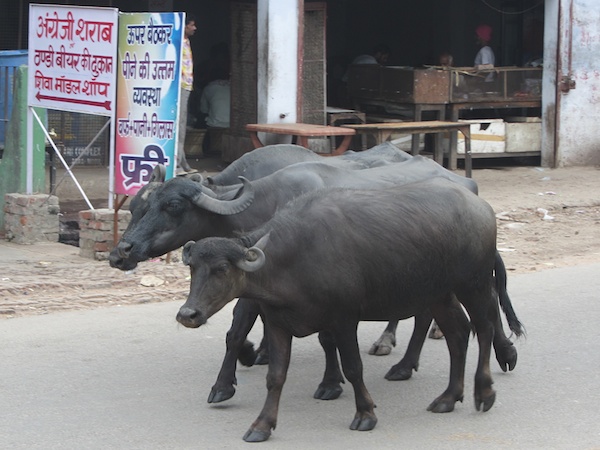
Eventually we found the toll road, and apart from the regular police checkpoints (security fencing across the road that constrict the traffic into a slalom but which are otherwise ignored), we seemed to be the only vehicle moving, something of a shock after navigating the crowded streets of Delhi.
On either side of the highway, boggy land was being drained and the clay dug out and fired into bricks in the hundreds and hundreds of little kilns spread out across the landscape.
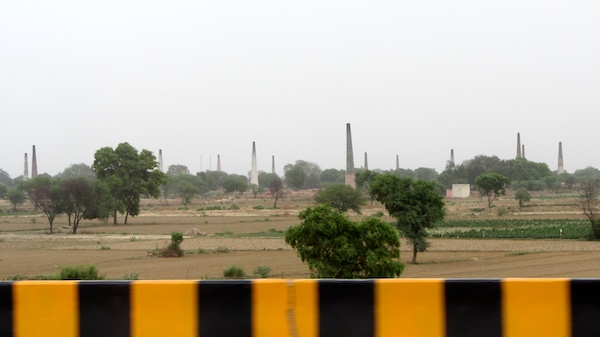
The clay was being dug to a depth of about a metre, with walls left standing around every square acre or so. It looked as if water (and perhaps night soil) was then being pumped into each rectangular plot, which was then being planted with crops. The produce was later stored in thatched and mud huts.
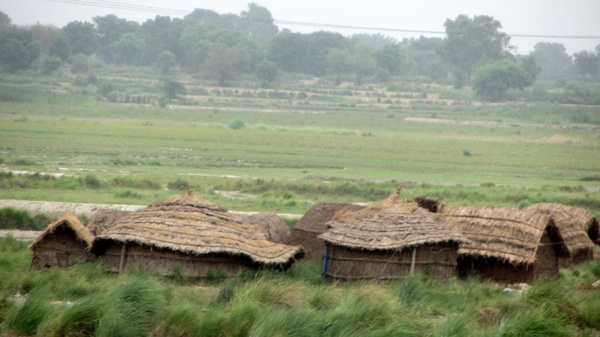
Eventually we arrived in Agra, where the traffic was just as chaotic as in Delhi. All we had was the postal address of the hotel, so Happy navigated by asking people every few miles if they’d heard of it.
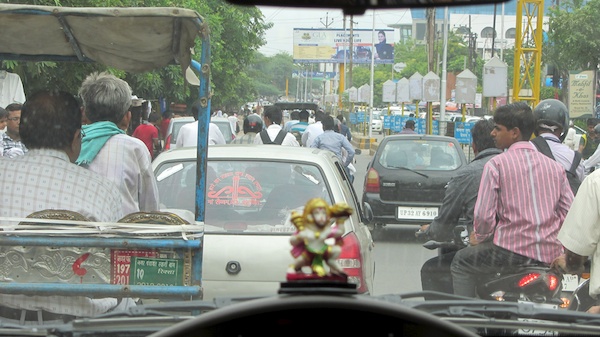
The randomness of the answers intimated that nobody had, but we passed many miles of shack hostels leaning up against local shops, before passing through an area of impressive government offices, which opened out into a sprawling confection of turrets and crenellations which turned out to be our hotel, The Grand Agra.

As well as the now familiar check for car bombs (a mirror on a stick under the chassis, and a poke around under the bonnet), we also had to pass through a metal detector in the foyer, and watch as our luggage was unloaded through an airport X-Ray machine, before being allowed to check in. Once Inside, the hotel was impressively palatial, and indeed at one end they were building a ‘presidential suite’ with its own helipad and views over the Taj Mahal.
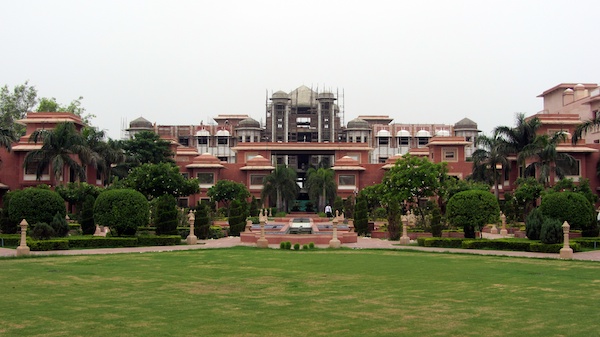
We had originally intended to visit the Taj at sunset, but we would have had to rush to get to the ticket office before it closed, so we decided to go at dawn the following day, giving us the excuse to relax with some pleasant beers in the bar as the sun went down.
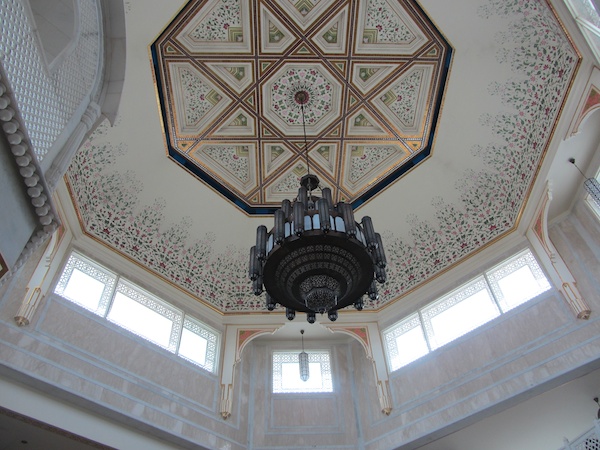
Later we ate a splendid meal at the restaurant, which we had to ourselves apart from a legion of waiters and a sitar player. Very very stuffed, we waddled out into the darkness and through the water garden to our rooms, surprising a trio of men with rifles who are presumably the night watch.